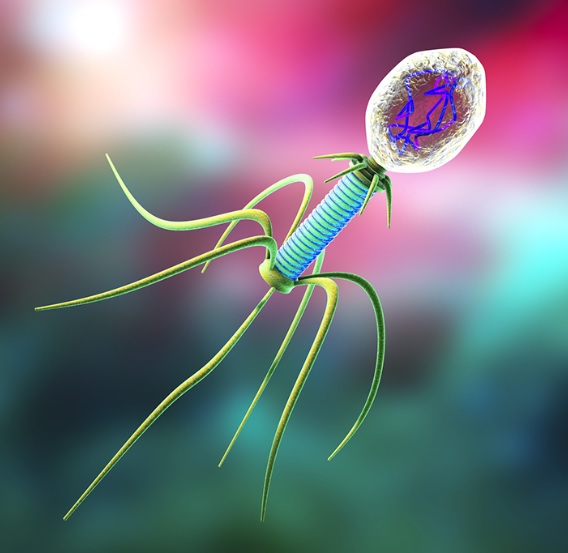According to the World Health Organization, one of the biggest health threats around the world is antibiotic-resistant bacteria. Every day people use antibiotics to prevent or fight back against infection, but as bacteria evolve and develop resistance, diseases such as pneumonia and tuberculosis are becoming harder to treat.
Researchers at the University of Notre Dame are working to combat this problem by looking to bacteriophages or phages, which are viruses that infect bacteria. Phages infect bacteria, similarly to how bacteria infect people, but bacteria have yet to develop resistance to these viruses. In a study published in Nanoscale Advances, the researchers have shown the efficacy of a new nanoparticle-based system that mimics how phages attack and kill bacteria.
Phage-mimicking nanoparticles
“Instead of chasing the next antibiotic, we want to create a system that can treat infection and is an option that bacteria can’t develop resistance to,” said Prakash Nallathamby, research assistant professor of aerospace and mechanical engineering and directing author of the study. “In our initial attempt, our team was able to kill several different types of clinically relevant bacteria with varying degrees of success.”
The phage-mimicking nanoparticle system consists of silver-coated gold nanoparticles distributed randomly on a silica core. Once created, the system was tested for its ability to kill four bacteria types that are known to have antiobiotic-resistant strains: Corynebacterium stratiatum, Enterococcus faecalis, Pseudomonas aeruginosa, and Staphylococcus aureus. These various bacteria cause a number of health issues including prosthetic device infections, sepsis, meningitis, and blood infections.
Initial tests showed that the nanoparticle system was 50 to 90 percent effective in killing the bacteria strains for all but Pseudomonas aeruginosa, which was only 21 percent effective. However, when the researchers combined the nanoparticle system with peptides that also have antibacterial activity, the system was 100 percent effective at killing the bacteria.
Eliminating bacteria
“By incorporating a biological element, we were able to make the nanoparticles more effective in eliminating the bacteria in initial testing,” said Nallathamby.
“Now, we are actively looking to partner with an organization that would advance this system to a clinical study.”
The lead author of this study was postdoctoral researcher Juliane Hopf. Other coauthors include Shaun W. Lee, Monahan Family Associate Professor of Rare and Neglected Diseases; Ryan Roeder, professor of aerospace and mechanical engineering; Joshua Shrout, associate professor of civil & environmental engineering & earth sciences; graduate student Katelyn Carothers; and undergraduate researchers Margo Waters and Veronica Kalwajtys.
The study was supported by the strategic research initiatives Advanced Diagnostics and Therapeutics and the Notre Dame Nanoscience and Technology (NDnano). Additionally, the study was partially funded by the Indiana Clinical and Translational Sciences Institute. The intellectual property from these studies is protected by a patent application filed by the IDEA Center at the University of Notre Dame.
— Brandi Wampler, ND Research
